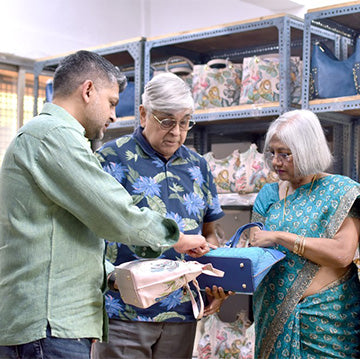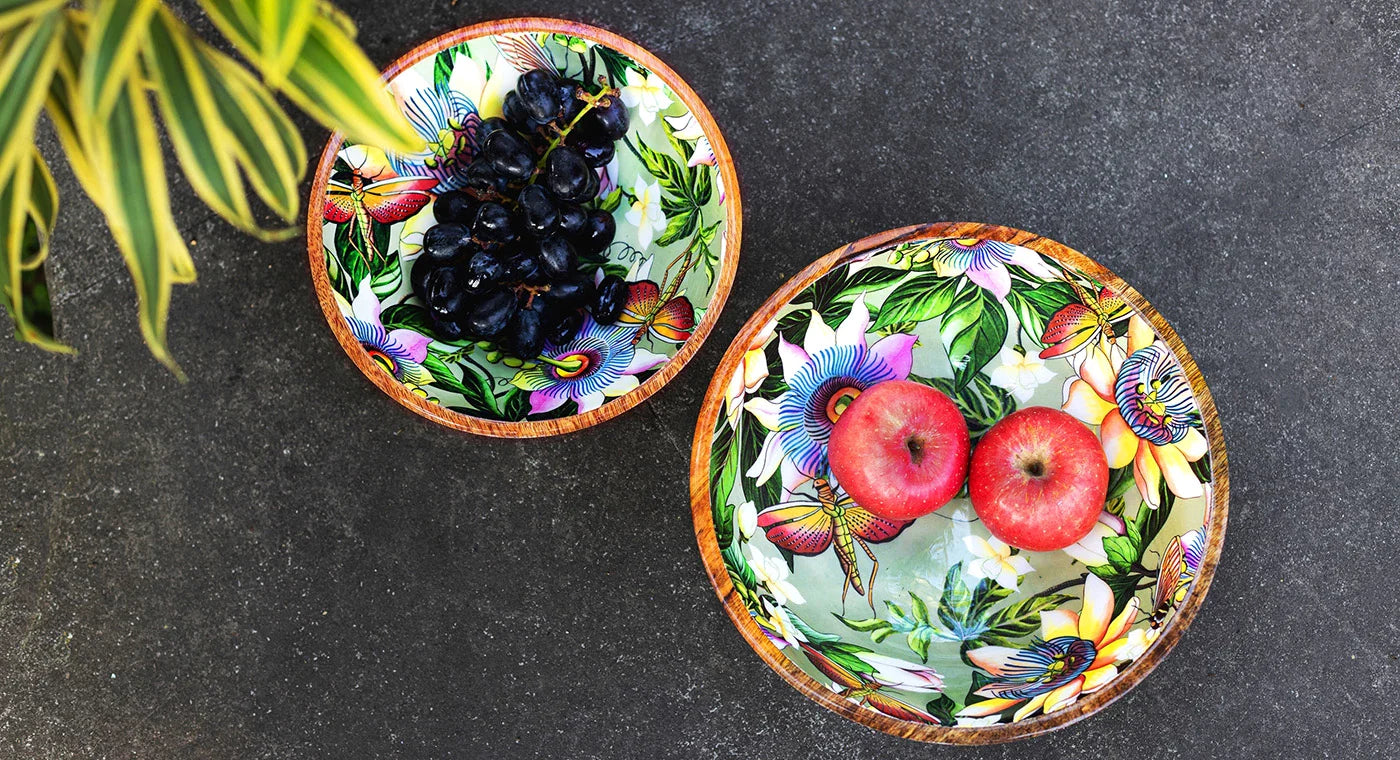The Evolution of Leather Bags: Sustainable Practices and Innovation

In the ever-changing world of fashion, the evolution of leather bags ensure they remain timeless accessories. However, as public knowledge of environmental issues grows, the leather industry is adapting to more sustainable practices and creative technologies.
Anuschka is a leading brand that combines heritage with modernity to create attractive, eco-friendly products.
This article delves into the evolution of leather bags, highlighting sustainability and advancements in leather production, with a particular emphasis on Anuschka.
A Brief History of Leather Bags
Leather bags go back thousands of years. They were originally revered for their durability and practicality in ancient civilizations. Using the durability of leather, early humans created rudimentary leather pouches for carrying essentials. The purpose and style of these changed with time.
During medieval times, leather purses were more ornate, often decorated with fine details and served as status symbols. More artistic flourishes that mirrored the era's cultural achievements surfaced during the Renaissance. Significant advancements happened during the industrial revolution of the 19th and 20th centuries, which made mass production and a greater variety of designs possible.
Leather bags evolved from merely useful objects to fashion accessories, driven by social trends and technological breakthroughs. Today, leather bags have established themselves as timeless fashion symbols.
They have cemented their place as fashion statements in today's world, with styles ranging from traditional totes to delicate clutches. Technological advancements have introduced creative tanning and crafting procedures, which have increased their popularity. Today, they continue to adopt sustainable processes and innovative material, answering the demands of ecologically concerned customers while keeping their rich tradition and enduring charm.

Traditional Leather Production
Traditional leather manufacture requires complex processes, where tanning is an important stage in preserving the hide and making it durable. Historically, vegetable tanning was the most common technique for producing leather with rich colour and texture by extracting natural tannins from tree bark and leaves.
Although ecologically beneficial, this is time-consuming, sometimes lasting weeks or months. Faster methods, like chromium tanning, have essentially supplemented vegetable tanning due to their speed and efficiency, but they have substantial environmental downsides, as they discharge of toxic compounds.
As a result, there is a growing interest in revitalizing and upgrading vegetable tanning techniques by combining old methods with modern technology to make high-quality leather in a more sustainable and environmentally responsible way.
Discover how Anuschka’s hand painted leather bags are made.

Eco-Friendly Leather Tanning
Eco-friendly leather tanning procedures are critical for mitigating the environmental impact of traditional leather production. Vegetable tanning, for example, uses natural tannins derived from tree bark and fruits, providing not just environmental benefits but also leather with high durability and a distinct, natural appearance. Chrome-free tanning marks yet another big step, replacing hazardous chromium salts with safer, biodegradable alternatives.
These advances not only maintain the excellent quality expected of leather, but also improve artists' safety by reducing exposure to hazardous chemicals. As consumer knowledge of sustainability rises, the demand for eco-friendly leather fuels progress in designing and implementing more responsible methods throughout the leather industry.

Innovative Materials in Leather Production
Innovations in leather production have resulted in the development of alternative materials that mimic the qualities of conventional leather while encouraging sustainability. Mushroom leather is made from fungal mycelium and is a tough substance that looks like animal leather. It is also biodegradable and cruelty-free. Piñatex, made from pineapple leaf fibers, is a durable and soft leather-like material that successfully utilizes agricultural by-products.
Lab-grown leather, also known as bio-fabricated leather, is cultured from collagen in controlled lab environments, providing the same durability and aesthetic appeal as traditional leather while having a lower environmental impact than animal farming. These improvements indicate a rising trend toward sustainable procedures in the leather industry, in response to ethical concerns and consumer desire for ecologically responsible alternatives.

Ethical Sourcing and Fair Trade Practices
Ethical leather sourcing and fair trade standards are critical in today's consumer-driven industry, which is fueled by growing awareness of environmental implications and ethical concerns in leather production. Ethical sourcing promotes responsible leather procurement, enhance environmental sustainability through material traceability and strict adherence to standards.
At the same time, fair trade policies promote fair salaries, safe working conditions, and community development for leather workers, which are confirmed by certification systems that ensure buyers of ethical standards. Companies like Anuschka embody these ideas by incorporating ethical sourcing and fair trade methods to maintain openness and responsibility across their supply chain.
These efforts are critical in defining a sustainable and fair future for the global leather industry, highlighting the importance of ethical decisions in both company operations and consumer choices.

Recycling and Upcycling in Leather Production
Recycling and upcycling are important activities that are gaining support in the leather industry, with the goal of decreasing environmental impact and increasing sustainability. Recycling entails converting leather scraps and offcuts from manufacture into new items, thereby reducing waste and preserving resources.
Meanwhile, upcycling repurposes old leather goods or vintage pieces into higher-value objects, increasing their aesthetic and utilitarian appeal while diverting resources from landfills.
Together, these activities provide a circular economy strategy in the leather sector, in which resources are reused and regenerated to promote efficiency and environmental responsibility. By embracing recycling and upcycling, the sector is moving toward a more sustainable future that emphasizes innovation and responsible resource management.

Technological Innovations in Leather Crafting
Technological innovations are transforming the landscape of leather crafting by bringing novel techniques such as digital printing and laser cutting. Digital printing enables accurate and intricate graphics to be printed directly to leather surfaces, reducing ink consumption and expanding creative possibilities.
Meanwhile, laser cutting provides exceptional precision in shaping leather, from delicate patterns to unique engravings, all while decreasing material waste and increasing production efficiency. These improvements improve the quality and customization of leather products and help reduce environmental effects.
Digital printing and laser cutting are driving a move toward more sustainable and accessible practices in the leather industry by streamlining production processes and democratizing access to high-quality designs, offering a future of improved craftsmanship and eco-conscious manufacturing.

Consumer Trends Towards Sustainable Fashion
Consumers today are increasingly concerned with sustainability when it comes to fashion, looking for products that mix style and environmental responsibility. Anuschka is betting on this trend by emphasizing sustainability in the creation of hand-painted leather products, which have become famous icons of eco-conscious style.
The brand's dedication is obvious in every part of their operations, from sourcing high-quality leather using environmentally responsible tanning procedures to guaranteeing fair trade standards for its experienced artisans.
By choosing Anuschka, customers are aligning themselves with a brand that not only provides great craftsmanship and artistic design, but also promotes ethical production and environmental responsibility. This approach not only addresses consumer demand for beautiful and ecological products, but also establishes a precedent for the fashion industry, encouraging a change to more responsible shopping.

Anuschka’s Commitment to Sustainability
Anuschka has an established reputation in the fashion industry by adhering to the highest standards of craftsmanship and quality. In recent years, the business has also taken considerable steps toward sustainability, adopting eco-friendly methods that are altering industry standards. Anuschka is a shining example of fashion sustainability, promoting ethical material sourcing and applying efficient waste reduction measures.
Anuschka's hand-painted leather purses are more than just fashion accessories; they combine artistic quality with environmental sustainability. Each bag is precisely crafted by expert artisans, demonstrating excellent craftsmanship and sustainable fashion techniques.
Anuschka's dedication to sustainability extends beyond its products, influencing customer behavior and encouraging ethical business practices around the world. Anuschka's hand-painted leather handbags set a new industry standard while also increasing brand appeal. Their commitment inspires shoppers to emphasize quality, workmanship, and environmental responsibility while making fashion decisions nowadays.

Future Prospects for Sustainable Leather Bags
The future of sustainable leather bags is bright, thanks to improvements in eco-friendly materials and production methods that strive to reduce environmental effect. Leading brands like Anuschka reflect this transition by demonstrating that it is feasible to develop fashionable, high-quality items while addressing sustainability.
Natural tanning procedures and the use of alternative materials such as plant-based leathers and recycled fibers are examples of innovation, indicating a substantial shift towards a more responsible and environmentally conscious leather industry.
Anuschka's leadership not only sets ethical production standards, but also stimulates wider adoption of sustainable techniques throughout the fashion industry, reflecting a growing customer preference for items that combine great workmanship with environmental responsibility.

Conclusion
The growth of leather bags reflects a bigger trend in the fashion industry: sustainability and innovation. Anuschka is not only conserving traditional craftsmanship, but also experimenting with new processes and materials to create eco-friendly products.
The emphasis on sustainability serves as a lighthouse for the industry, demonstrating a commitment to ethical practices and pushing others to emulate Anuschka. By emphasizing sustainability, Anuschka and some other manufacturers not only address consumer demand for fashionable accessories, but also provide options that align with environmental ideals.















